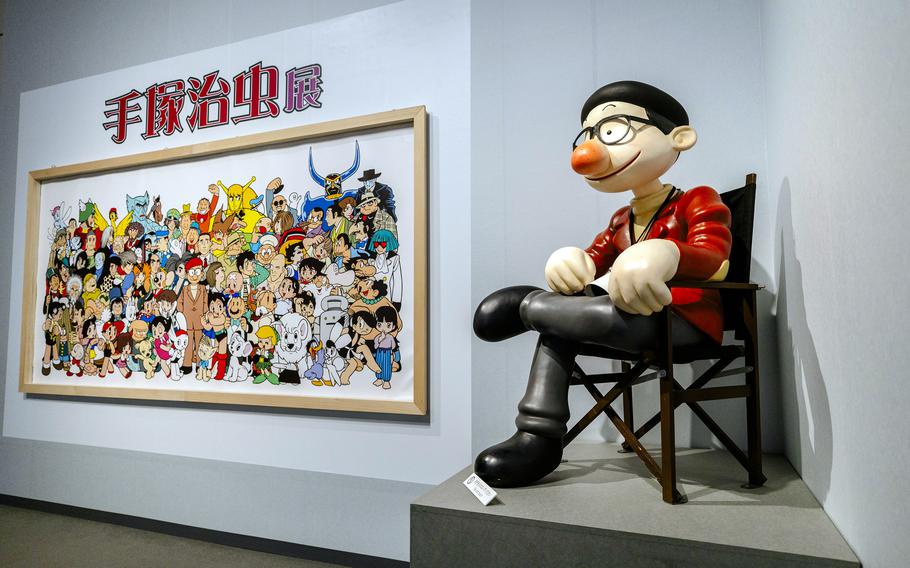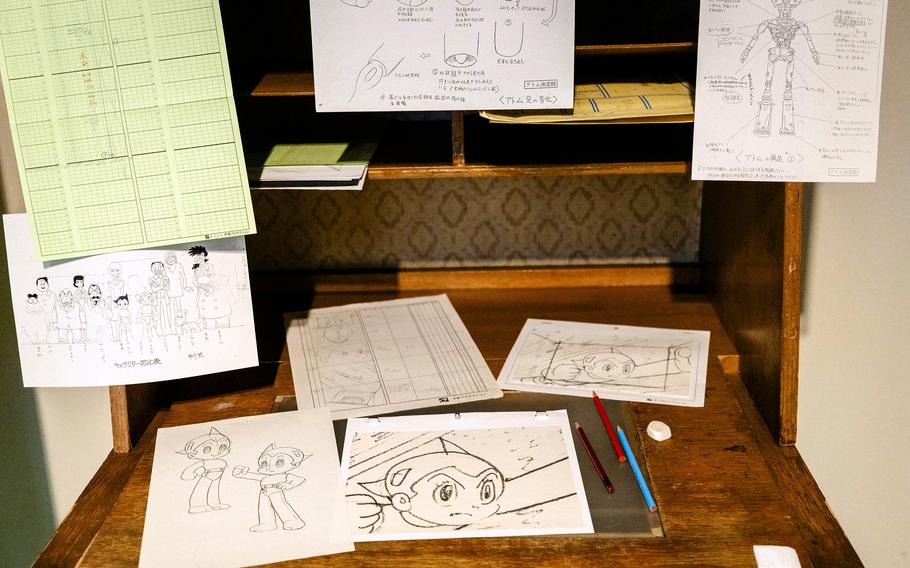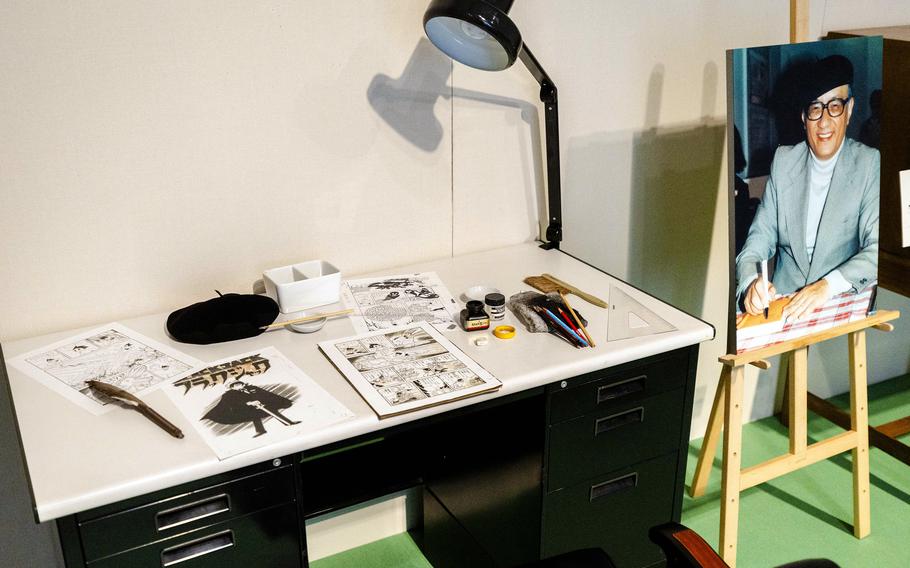
Known internationally as the mind behind the manga series “Iron Atom,” called “Astro Boy” in the United States, Osamu Tezuka's influence stretches far beyond the pages of his comics. (Marc Castaneda/Stars and Stripes)
An exhibit at the Tokyo Fuji Art Museum in Hachioji, a western Tokyo suburb not far from Yokota Air Base, revives the first manga and anime many Americans ever experienced.
The creator of Astro Boy and Kimba the White Lion is revered in Japan as the “god of manga” whose creations represent some of the first popular expressions of the art anywhere.
The special exhibit, Osamu Tezuka: Upon Wings of Dreams, running through Sept. 15, is a deep dive into Tezuka’s life and work. Known internationally as the mind behind the manga series “Iron Atom,” in Japan, called “Astro Boy” in the United States, Tezuka’s influence stretches far beyond the pages of his comics.
“Astro Boy,” based on the story of a boy robot, was the first anime series broadcast outside Japan. It aired for 104 episodes on NBC between 1963 and 1965.
“Kimba the White Lion,” another Tezuka creation and based on a “brave and optimistic” lion cub, first aired for 52 episodes on NBC between 1966 and 1967.

Osamu Tezuka: Upon Wings of Dreams features more than 200 pieces of the "Astro Boy" creator's work, from rough sketches to detailed illustrations. (Marc Castaneda/Stars and Stripes)
The special exhibit features more than 200 pieces of Tezuka’s work, from rough sketches to detailed illustrations. I felt as if I’d stepped inside the mind of the masterful animator and creator of such well-known characters as Black Jack, Princess Knight and Phoenix.
The further I moved through the gallery, the more I began to grasp the depth of his creative genius.
A certain three-piece storyboard of the jet-booted robot boy duking it out with a mechanical kaiju, or beast, piqued my interest. The first animation cel depicted a gaping crater, pebbles breaking loose from the impact, and the small silhouette of the protagonist struggling as his opponent pinned him to the wall.
The remaining two showed the monster defeated as Astro Boy towered over him. The trio told a full story through minimal yet powerful linework.
Most of Tezuka’s displayed pieces all share unmatched attention to detail. His concepts from 1971 and 1978 showed some meticulous color work that reminded me of another animation pioneer, Walt Disney.
The two met during the 1964 World’s Fair in New York, where Disney suggested a collaboration to create something like Astro Boy, though it bore no fruit.
Still, Tezuka’s imagination inspired many prominent artists to come. Hayao Miyazaki of “Spirited Away”, Katsuhiro Otomo, creator of “Akira,” Naoko Takeuchi of “Sailor Moon” and, perhaps the biggest one, Akira Toriyama of the “Dragon Ball” series, all cite Tezuka as a major inspiration.
Toward the end of the exhibit, a mockup re-creates Tezuka’s work desk. Colored pencils, drafts and his signature black beret are displayed here.

Osamu Tezuka: Upon Wings of Dreams features more than 200 pieces of the "Astro Boy" creator's work, from rough sketches to detailed illustrations. (Marc Castaneda/Stars and Stripes)
Overall, the trip was inspirational. This exhibit isn’t just nostalgia for anime fans, though. It’s a rare chance to understand how one man redefined a medium, influenced generations of creators, and left a mark on global pop culture.
Whether you grew up watching Astro Boy or just know his silhouette in passing, visiting this exhibition is like stepping into the blueprint of modern Japanese storytelling.
On the QT
Directions: About a 20-minute drive from Yokota Air Base and less than an hour from Camp Zama. 492-1 Yanomachi, Hachioji, Tokyo 192-0016.
Times: Open 10 a.m. to 5 p.m., Tuesday through Sunday; exhibit closes Sept. 15
Costs: Admission is 1,500 yen.
Food: An onsite restaurant offers a menu that changes with the seasons.
Information: Phone: 0426-91-4511, Online: fujibi.or.jp/en